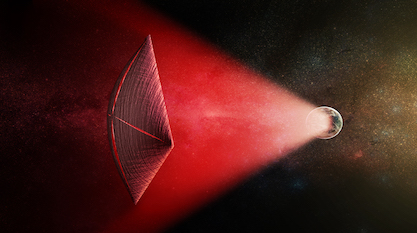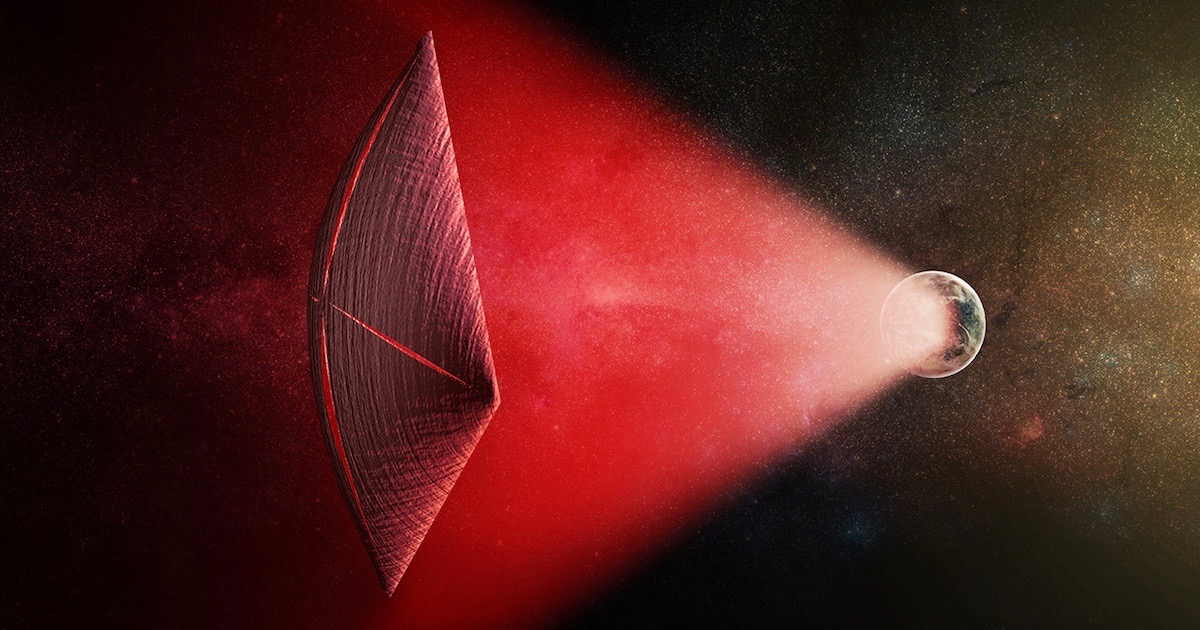 Intelligent Design
Intelligent Design
 Physics, Earth & Space
Physics, Earth & Space
Light Sails: In Fast Radio Bursts, Harvard Scientists Seek Evidence of Intelligent Design


Some critics of intelligent design — the less serious ones — maintain that seeking to detect design in nature is akin to searching out fairies and unicorns. Tell that to Avi Loeb and Manasvi Lingam, researchers at the Harvard-Smithsonian Center for Astrophysics.
Their forthcoming paper in Astrophysical Journal Letters is “Fast Radio Bursts from Extragalactic Light Sails.” It applies what is manifestly (albeit not by that name) a design filter to evaluating a mysterious phenomenon in distant space. So-called fast radio bursts (FRBs) could be natural. Or they could be an artifact of non-human intelligence, an unknown technology in use to power enormous alien spacecraft in “sailing” across the stars. Distinguishing nature from artifact is the main point on the agenda of all intelligent design research, whether it’s called that or not.
A statement announcing the publication is fascinating:
The search for extraterrestrial intelligence has looked for many different signs of alien life, from radio broadcasts to laser flashes, without success. However, newly published research suggests that mysterious phenomena called fast radio bursts could be evidence of advanced alien technology. Specifically, these bursts might be leakage from planet-sized transmitters powering interstellar probes in distant galaxies.
“Fast radio bursts are exceedingly bright given their short duration and origin at great distances, and we haven’t identified a possible natural source with any confidence,” said theorist Avi Loeb of the Harvard-Smithsonian Center for Astrophysics. “An artificial origin is worth contemplating and checking.”
As the name implies, fast radio bursts are millisecond-long flashes of radio emission. First discovered in 2007, fewer than two dozen have been detected by gigantic radio telescopes like the Parkes Observatory in Australia or the Arecibo Observatory in Puerto Rico. They are inferred to originate from distant galaxies, billions of light-years away.
Loeb and his co-author Manasvi Lingam (Harvard University) examined the feasibility of creating a radio transmitter strong enough for it to be detectable across such immense distances. They found that, if the transmitter were solar powered, the sunlight falling on an area of a planet twice the size of the Earth would be enough to generate the needed energy. Such a vast construction project is well beyond our technology, but within the realm of possibility according to the laws of physics.
…
[Lingam and Loeb] asked, why build such an instrument in the first place? They argue that the most plausible use of such power is driving interstellar light sails. The amount of power involved would be sufficient to push a payload of a million tons, or about 20 times the largest cruise ships on Earth.
“That’s big enough to carry living passengers across interstellar or even intergalactic distances,” added Lingam.
The Washington Post points out that space sails are an idea explored in science fiction. They mention a short story by Arthur C. Clarke (“Sunjammer”) and a 2002 Star Wars installment (Attack of the Clones). So is this just a case of more fairies and unicorns? Obviously not. Avi Loeb is known for his out-of-the-box thinking. But he is a highly regarded astrophysicist. The science seems sound. Solar sails, indeed, are probably the easiest way to imagine travel to the stars.
As the Post concedes, NASA is already on the verge of employing light sails, on an appropriately modest scale.
Solar sails are poised to jump into real life, too, in 2018. Two years ago, NASA announced its Near-Earth Asteroid Scout, which will use a reflective sail to travel toward a lump of space rock.
And if the technology of light sails seems beyond our present ken, that should come as no surprise. Do you think Aristotle could even begin to conceive of a TV remote? Or a cell phone? Not likely. So on what grounds do we suppose that advanced aliens would employ technologies easily comprehensible to us?
Even without evaluating the physics of FRBs in relation to the Lingam & Loeb hypothesis, it’s good to observe their use of a design-filter mode of reasoning. Seeing intelligent causation not as fantastic or inherently suspect, but another genuine causal possibility reached by objectively sifting evidence, is the first step to setting science free from its slavery to materialism.
In short, there’s no magical thinking in light sails. Only good ID science. Their hypothesis is speculative, but thoughtful and serious. It also rests on a good deal less evidence than the argument for design in our familiar world of terrestrial biology.
Image credit: M. Weiss/Harvard-Smithsonian Center for Astrophysics.
